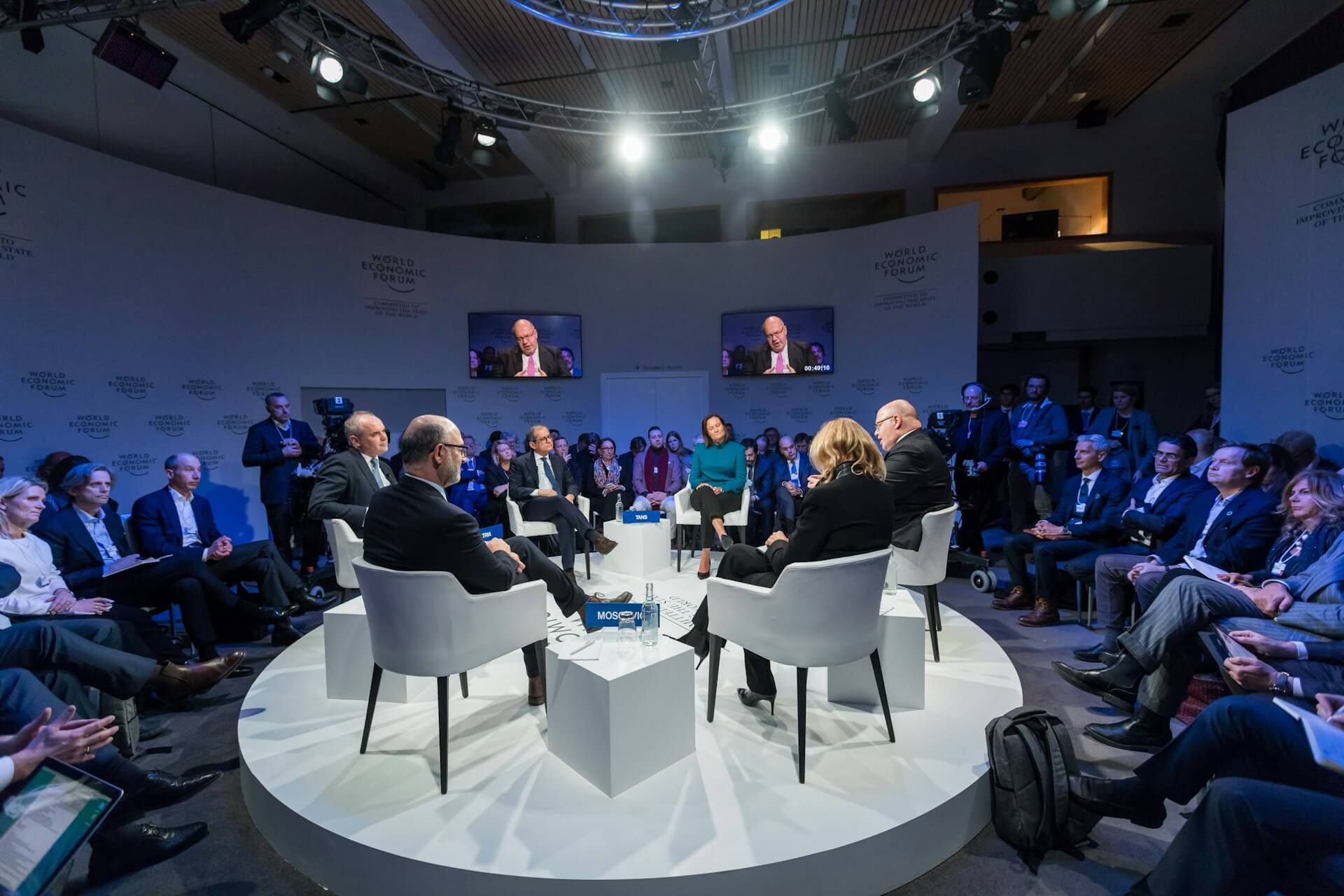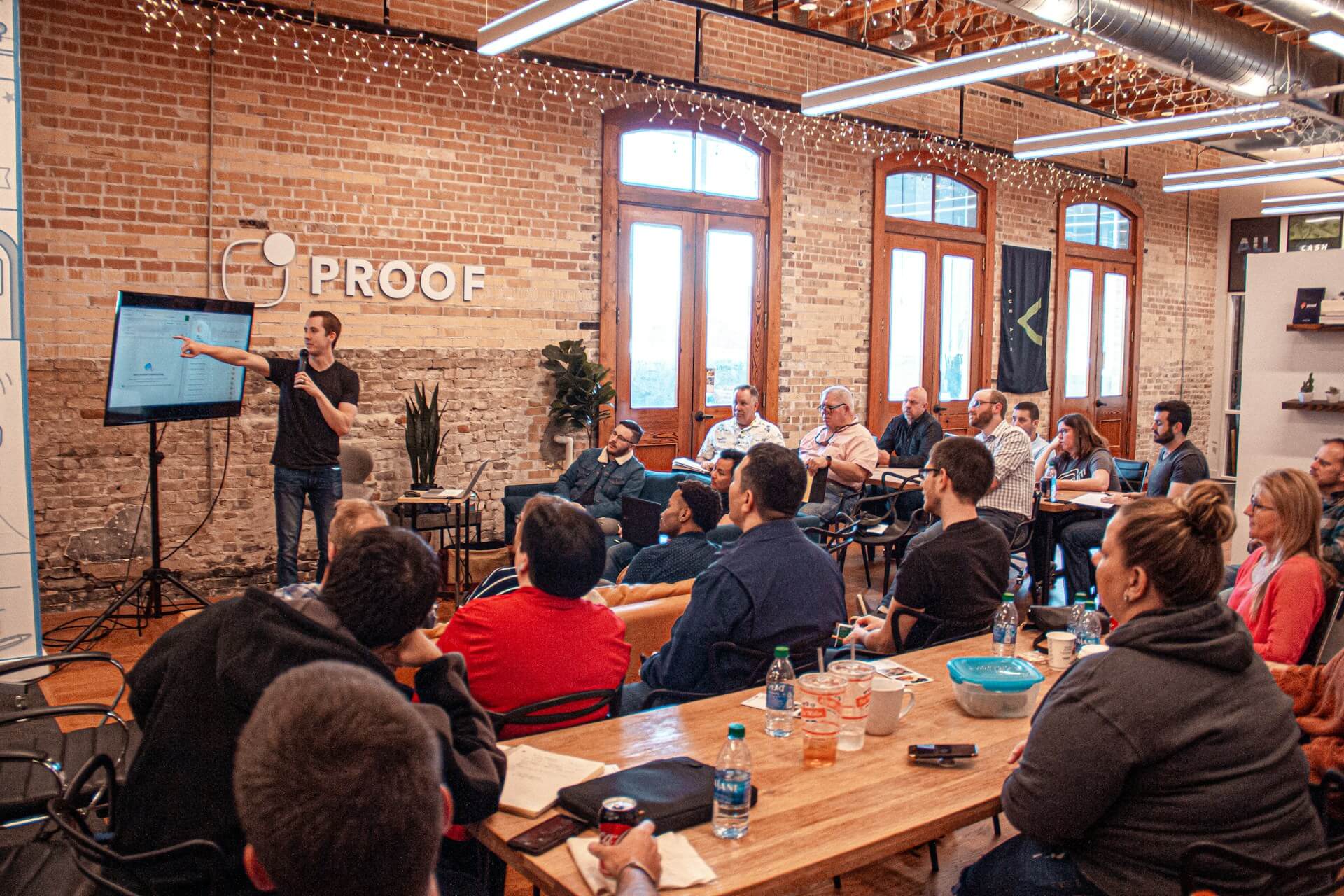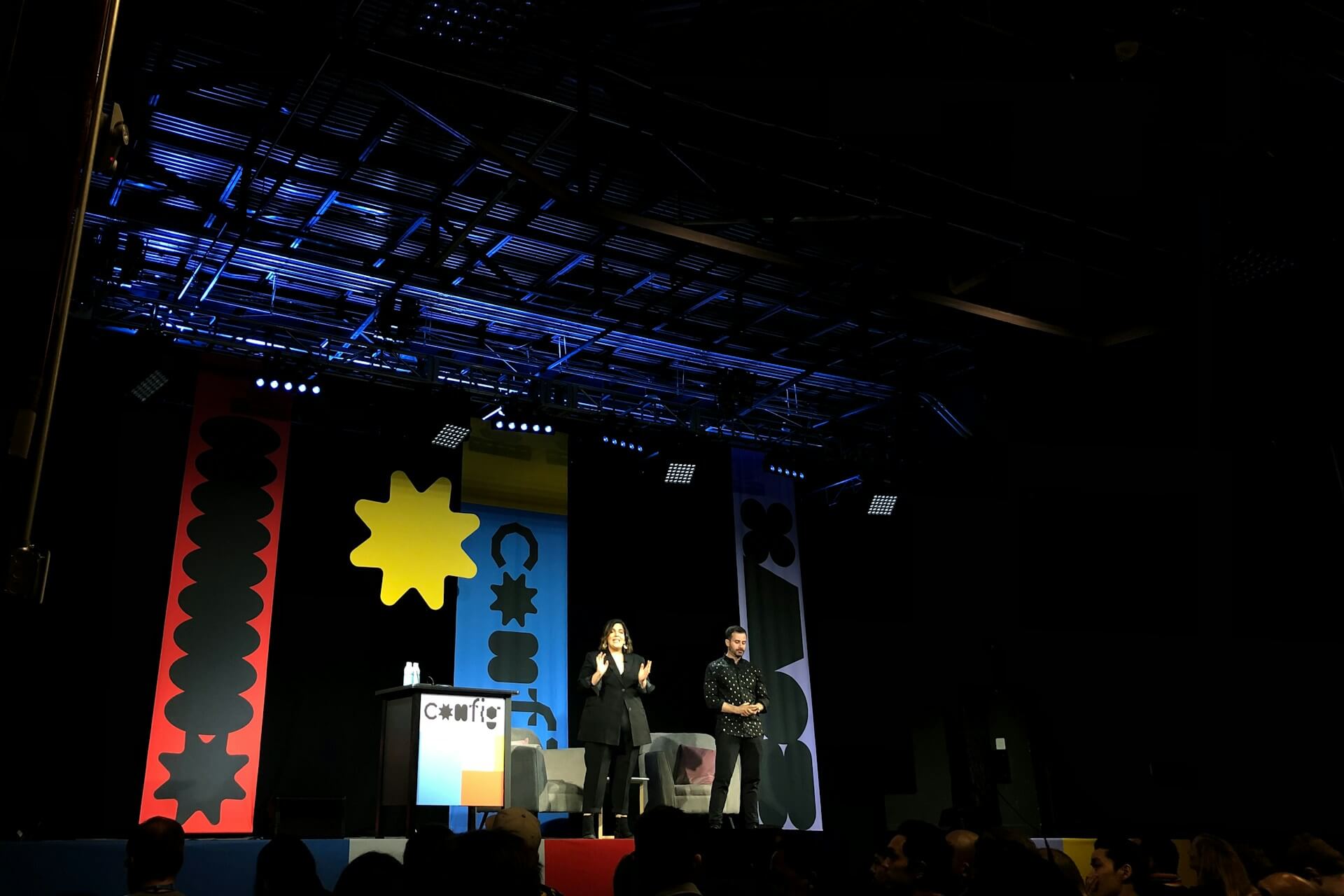What makes one conference unforgettable, and another instantly forgettable? It often comes down to the theme.
The best conference themes do more than look good on a banner; they give your entire agenda structure. Think of your theme as the heartbeat of your event, with every session, speaker, and space working together to reinforce a central idea.
In this guide, we’re sharing 15 conference theme ideas that actually work! Not just in theory, but in practice. Each one comes with tips on how to build your event around it, so attendees stay engaged, inspired, and already excited for next year’s theme.
How to Choose the Right Conference Theme

Before you start picking colors and taglines, take a step back. There are a multitude of great conference theme ideas available (and 25 of them are right here!), but that doesn’t mean all of them will work for your target audience. The conference theme you choose should resonate with your audience.
There are a few questions you should ask yourself before choosing a theme:
Who is my audience?
Executives and C-suite? First-time attendees? Tech innovators? Educators? Choose a theme that aligns with their values, challenges, and expectations.
For example, a theme like “Disrupt Everything” might resonate with a room full of tech innovators who thrive on bold thinking and rapid change, but it could feel off-putting or vague to educators who value structure, equity, and proven methods.
In that case, a theme like “Building What’s Next” or “Innovating with Purpose” might strike a better balance.
What’s my event format? (in-person, virtual, or hybrid)
Your event format should guide the type of conference theme you choose — not every idea works well across in-person, virtual, and hybrid settings.
- In-person? Choose a theme that sets a mood. Lighting, staging, and signage can reinforce the tone — think futuristic, nostalgic, playful, or sleek.
- Remote or hybrid? Focus on ideological themes that show up in content, conversation, and visuals. Think: “Breaking Barriers,” “Innovating Together,” or “Lead with Purpose.”
A strong theme works across formats, even if it shows up differently for virtual vs. in-person attendees.
What emotional tone do I want to set?
Do you want to energize a burnt-out audience? Reassure people navigating change? Inspire bold thinking or collaboration? Your theme should emotionally cue how attendees feel walking in and how they engage throughout the conference.
Does this actually matter? Yes! Emotional tone shapes not just the sessions, but the conversations, the dress code, the pacing, even how people network. It’s the difference between attendees feeling invited to reflect vs. called to act. This differentiation will shape how people remember your conference and what they take from it.
25 Conference Themes
Now that your brain is spinning with the right questions, it’s time to get down to business. Here are 25 conference themes segmented out for different audiences. You can jump to your desired audience here:
Leadership Conference Themes

An effective leadership theme sparks an “Aha!” moment. The people attending these events aren’t starting from scratch. They’re C-suite executives, department heads, and emerging leaders.
They’ve been in the trenches.
They know what works and what doesn’t.
Therefore, your conference theme needs to go beyond the basics. It should offer depth, nuance, or a fresh perspective. Leaders want to leave with something they can act on. If your theme is too abstract or vague, it won’t land. Choose an idea that connects to real-world problems and outcomes.
1. Lead with Purpose
This theme challenges leaders to connect the why behind their decisions to the impact those decisions have on people, on culture, and on the long-term health of the business.
Unlike themes focused on growth or innovation, Lead with Purpose is about alignment: making sure what leaders say matches how they act. It works best for leadership teams facing cultural transformation, rebuilding trust, repositioning their brand, or hiring with values in mind.
To make this theme resonate with experienced leaders, don’t default to sessions about “finding your why” unless you’re speaking to a junior or emerging audience.
Instead, focus on real tensions and decision points:
- How do leaders respond when purpose and profit conflict?
- What frameworks can help teams navigate value-based decision-making?
- What happens when you lead with purpose… and it fails?
Session idea: “When Values Cost Revenue, And Why We Did It Anyway”
Bring in a speaker who stuck to a principle (e.g., ethical sourcing, DEI commitments, transparency in a crisis) even when it hurt short-term growth.
2. The Future Starts with Us
This theme is about strategic ownership.
It’s designed for leadership teams navigating uncertainty and needing to define a clear path forward at the same time. That might mean launching a new product line while sunsetting another, rolling out AI tools before internal systems are fully ready, or rethinking the org chart after a merger or layoff cycle.
This theme is useful when the old playbook no longer fits, but a new one hasn’t been written yet. Leaders are being asked to act decisively even when clarity is limited. The Future Starts with Us gives attendees a framework to stop waiting for a roadmap and start building one.
Use this theme to prompt conversations that prioritize long-term bets over short-term fixes and push past the “but this is how we’ve always done it” mindset.
Session idea: “What We’re Betting On”
Host a roundtable where senior leaders each share one decision they’re making now that carries long-term implications. It could be a product investment, culture shift, or operational change. They should share anything that shows how they’re building, not just reacting.
3. Elevate Every Voice
This theme is about dismantling hierarchy where it gets in the way of progress.
Research shows that 40% of employees lack confidence in sharing their ideas. That’s not a people problem. It’s a leadership environment problem.
Too often, leaders underestimate how their presence shapes a room. People filter what they say. They stay surface-level. Elevate Every Voice invites leaders to listen differently—without rushing to solve, judge, or steer the conversation.
This theme works well when your audience is thinking about:
- Trust and transparency
- Culture repair or retention
- Strengthening inclusion beyond hiring stats
- Encouraging innovation from more than the top
At a leadership conference, you likely won’t have frontline employees in the room, but that doesn’t mean you can’t build awareness around how leadership presence affects what people say. The focus becomes helping leaders unlearn habits that unintentionally shut people down and practice better ones.
Session idea: “What We Don’t Hear”
Create a moment of clarity where leaders confront how hierarchy shapes what gets said and what doesn’t. Not to process it all right there, but to make it impossible to ignore going forward.
use 8–10 anonymized, real-world quotes from employees at various levels. Show them on screen or read them aloud one by one. For example:
“I don’t bring up issues in meetings because I know they’ll just get shut down.”
“My boss says she wants feedback, but only when it’s on her terms.”
“I’ve watched people speak up and then get quietly excluded from decisions later.”
Ask:
- Which of these quotes feels possible in your org?
- Which one stings? Why?
- When’s the last time someone told you something that surprised you?
This workshop creates emotional friction without demanding immediate resolution and makes space for future work to build from it.
4. Adapt & Advance
This theme is about leading through change without getting stuck in survival mode.
The pace of change isn’t slowing down, and this theme gives leaders space to assess what’s working, what needs to evolve, and where they’re stuck.
The strength of this theme is in its practicality. It’s grounded in the reality that conditions change, and leadership has to change with them. That doesn’t mean abandoning strategy. It means creating the space to adjust direction, shift priorities, or revisit decisions without viewing it as a failure.
Many leadership teams stay stuck because they’re holding on to outdated goals, legacy systems, or internal narratives that no longer reflect current reality. Adapt & Advance gives attendees permission to name what’s no longer serving them—and to move forward without needing a full reset.
Session Idea: “The Plan We Let Go”
Help leadership teams identify legacy plans, assumptions, or habits that are slowing them down—and create a path to move forward with intention.
How it works:
Each attendee is asked to bring one initiative, strategy, or approach from the last 12–24 months that hasn’t delivered the intended result. Not a total failure, just something that’s no longer serving the business as expected.
In small groups, they work through a facilitated set of prompts:
- What was this plan trying to achieve?
- What changed in the business or environment since it was created?
- What signs have we seen that it needs to shift?
- What’s holding us back from letting it go or evolving it?
Then, each person answers: What would progress look like now, given what we know today?
5. Bold Moves, Real Results
This theme is about decisive action and full accountability.
It’s designed for leadership teams that are stuck in planning mode, stretched across too many priorities, or waiting for the perfect moment to commit. Bold Moves, Real Results brings the focus back to action with clarity, visibility, and measurable outcomes.
A bold move doesn’t have to be dramatic. It just has to matter.
That might mean making a difficult hire, walking away from a legacy product, shifting a customer strategy, or saying no to something that’s been draining resources. What makes it bold is the risk, the visibility, and the willingness to follow through even when it’s uncomfortable.
This theme resonates when teams are spinning their wheels. It asks leaders to stop softening decisions for consensus and start leading with conviction. It works best when the goal is to create urgency, rebuild momentum, or break through internal resistance.
More than anything, Bold Moves, Real Results is a challenge: to stop waiting for ideal conditions and act with discipline and intent, starting now.
Session Idea: “The Move We’re Sitting On”
Create space for leaders to name a decision they’ve been avoiding, then work through what’s holding it up and what it would take to move.
How it works:
Start with solo reflection:
“What’s one strategic decision you’ve been postponing?
It could be a project you haven’t greenlit, a restructure you’ve been circling, or a change you believe in but haven’t backed publicly.”
Ask each participant to write down:
- The decision itself
- Why it matters
- What’s blocking it (fear, politics, timing, lack of alignment, etc.)
- What result would make the risk worth it
Then, move into small groups. Each leader will share their “stuck decision” and should get 10 minutes of structured input from the group.
6. From Vision to Impact
This theme is for leaders who are done talking about ideas; they’re ready to make them real.
Most people in the room already have a vision. They’ve set goals, shared strategies, and painted a compelling picture of where they want to go. But the harder part is what comes next: execution, accountability, and outcomes that actually reflect the intention behind the message.
From Vision to Impact is about narrowing the gap between what leaders say matters and what gets done. It’s especially relevant when priorities feel clear at the top, but blurry in the middle, or when progress is slow despite alignment on the big picture.
This theme works because it meets people where they are: wrestling with competing demands, limited resources, and the daily friction between strategy and reality. It pushes for honest reflection on what’s working, what’s stalled, and what needs to shift to translate vision into measurable progress.
Session Idea: “Where It’s Breaking Down”
Help leaders identify the specific points where their strategy is stalling, whether that’s communication, clarity, team engagement, or operational follow-through. Map out what to do next.
How it works:
Start with individual reflection. Ask attendees to choose one initiative, priority, or vision statement from their own organization that they’re currently responsible for advancing. Then guide them through these prompts:
- Is this vision clear to you? If someone two levels down was asked to explain it, would they describe the same thing?
- What’s already in motion? What’s stalled?
- What do people need more of—clarity, resources, reinforcement, or accountability?
- What’s your next leadership move to get this unstuck?
Move into small-group discussions to pressure-test their thinking. Each leader shares their situation and gets real-time input on what’s likely getting in the way, then what actions might help close the gap.
Education Conference Themes

Educators don’t come to conferences for hype; they come for answers. They want tools they can use, ideas that address real constraints, and conversations that respect their time and experience.
A good theme sets the tone for that kind of event. It helps you focus the agenda around what actually matters: improving student outcomes, building stronger systems, adapting to change, and staying grounded in what works. And it signals what kind of thinking will show up on stage: practical, research-backed, or deeply contextual.
Whether you’re planning for K–12, higher ed, or district leadership, your theme should connect directly to what people are dealing with right now: staffing shortages, policy shifts, equity gaps, burnout, tech integration, or academic recovery.
7. This Isn’t Working Anymore
This theme is about confronting what’s broken and building something better.
It acknowledges what educators already know: some of the systems, strategies, and classroom practices we’ve relied on just aren’t cutting it anymore. Not because people aren’t trying hard enough, but because the context has changed.
Student needs have shifted.
Expectations have grown.
And the gap between what we’re doing and what’s actually working is hard to ignore.
This theme creates space for practical reinvention. It resonates with educators who want to update how learning looks, feels, and functions without throwing out what still serves students. It opens the door to real talk about engagement, motivation, differentiation, and how we use time and technology.
It’s especially effective when your audience is asking:
- What routines or expectations have outlived their usefulness?
- What are we doing just because it’s standard practice?
- What could we change that would have a meaningful impact on student experience, or teacher sustainability?
Session idea: “What We Stopped Doing and Why It Helped”
Invite teachers, coaches, or school leaders to walk through one practice they stopped—on purpose, and what happened next. Maybe it was nightly homework, rigid pacing guides, behavior charts, or weekly staff meetings with no agenda.
Each panelist or presenter covers:
- What made them question the practice in the first place
- What they changed (or replaced it with)
- What impact they saw for students, staff, or themselves
The goal isn’t perfection, it’s honest reflection. This session gives educators permission to reevaluate, iterate, and move forward with intention.
8. Teaching in the Aftermath
This theme is about meeting students where they are, not where we wish they were.
For many educators, the pandemic is technically “over,” but the effects are still showing up every single day. Students arrive without the skills that used to be assumed: how to share space, how to handle frustration, how to focus, how to ask for help. The rhythms and routines that once grounded school life don’t feel automatic anymore.
And teachers are being asked to deliver grade-level content to students still figuring out how to exist in a shared space. In many classrooms, the academic struggle is layered with behavioral challenges, chronic absenteeism, and a growing divide between what standards expect and what students are ready for.
This theme gives educators room to name the tension: the pressure to catch students up without burning out in the process. It creates space to ask what supports are working, what assumptions need to shift, and how to lead through this moment with urgency and realism, not blame.
Session idea: “Reteaching What Used to Be Automatic”
In this session, educators share how they’ve adapted when students arrive without the academic and social skills that school used to take for granted. The focus is on practical adjustments, not theory. It’s what educators actually changed, how it played out, and what stuck.
Each speaker addresses:
- The specific skill or behavior that had broken down (e.g., group work, note-taking, self-regulation, classroom transitions)
- How they identified the gap—what signs they noticed and how it was affecting learning
- What they tried (and what didn’t work)
- The routine, structure, or practice they rebuilt to address it
- How they tracked progress or saw improvement over time
Attendees walk away with a framework for identifying “invisible” skill gaps early and strategies for reteaching foundational behaviors without losing instructional time.
9. When Reading Breaks Down
This theme is about what happens when students can’t access the content, not because they’re disengaged, but because they can’t read it.
Reading comprehension gaps are no longer isolated to ELA. Teachers in every subject are adjusting lessons because students can’t process grade-level texts. They’re simplifying instructions, filling in background knowledge, and reteaching how to extract meaning—all while trying to stay on pace.
According to the Nation’s Report Card, 39% of public school fourth graders scored below NAEP Basic in reading in 2022. In some states, that number exceeded 50%. By eighth grade, the White House reported in 2025, 70% of students were reading below proficiency. These gaps are especially visible in under-resourced schools, where teachers are stretched thin and support systems are limited.
This theme is a call to respond. It asks: What does it look like to teach content when students can’t independently access the material? How do we scaffold without watering down? And how do we train and support every teacher, not just ELA, to help students build the skills they’ve missed?
Session Idea: “They’re Not Disengaged, They’re Lost”
This keynote or featured session is led by a literacy expert who breaks down how reading comprehension gaps are driving challenges in classrooms across every subject area. The session helps teachers recognize that when students struggle to follow directions, avoid written tasks, or give up mid-assignment, reading may be the root cause, even when it doesn’t look like a reading issue.
The speaker uses real classroom scenarios to illustrate what reading breakdowns look like in practice. The expert then walks through what’s actually happening cognitively and what teachers can do to support students, even without changing their content or becoming literacy specialists.
10. Teaching in the Age of AI
This theme speaks directly to the tension teachers are feeling when it comes to AI: adapt or retreat.
As AI tools like ChatGPT enter classrooms, educators are rethinking everything from how they assess understanding to whether students should write essays at all. Many are torn between embracing new tools and protecting academic integrity.
Some schools are pushing forward with AI integration. Others are doubling down on handwritten assignments and in-class work. And most teachers are somewhere in the middle, asking: How do I know what’s real?
This theme isn’t about choosing sides. It’s about creating space for real discussion: What are students learning with AI? What are they losing? What’s the role of the teacher when information is instantly accessible?
It’s a powerful theme for conferences where attendees are:
- Actively confronting cheating and plagiarism issues
- Unsure how to grade or assess AI-assisted work
- Looking for clarity on how AI can support learning without replacing critical thinking
- Navigating conflicting guidance from districts, parents, and admin
Session Idea: “The AI Line in the Sand”
This interactive session asks every educator in the room to take a stand:
- Team Embrace It – AI is a tool like any other. Teach students how to use it well.
- Team Ban It – The risks to learning, ethics, and equity outweigh the benefits.
- Team Hybrid – Some guardrails, some adoption, but clear expectations.
But here’s the twist: once everyone has picked, they’re intentionally placed in mixed groups with people from the other stances.
Each group receives a realistic classroom challenge (e.g., preventing plagiarism on a take-home essay, teaching research skills with AI tools available, addressing equity when some students have AI access at home and others don’t).
Their task:
- Discuss how each perspective would approach the challenge
- Surface the values behind each approach – what’s being prioritized and why
- Create a shared recommendation that reflects all views, even if imperfect
11. Reclaiming the Room
This theme tackles the silent crisis playing out in classrooms every day: teachers trying to engage students whose attention is constantly pulled by phones, games, and social media.
Many educators describe tech dependence as something closer to addiction. Students zone out. They sneak devices. Some even melt down when separated from their phones or tablets.
And teachers aren’t just battling students. They’re often battling parents, too. Some families don’t see a problem. Others expect exceptions.
The result?
Inconsistent boundaries, undermined policies, and educators stuck in the middle.
Reclaiming the Room is about restoring the classroom as a place where presence matters, attention is respected, and learning feels human again. It’s about confronting what happens when the tools we use start using us.
This theme creates space to:
- Talk openly about student dysregulation, addiction patterns, and device anxiety
- Explore how to set boundaries that hold, even when parents push back
- Share what’s working in classrooms that are slowly regaining control
- Reimagine classroom culture in a way that centers connection over control
Session Idea: “Same Classroom, Different Lens”
In this interactive session, educators are invited to step inside the mindset of the very people who often push back the hardest: parents.
The session opens with two contrasting short stories:
- A teacher describing a day derailed by phones; students scrolling under desks, missing instructions, and exploding when asked to log off.
- A parent describing why their child “needs” their phone for safety, mental breaks, or emotional regulation, plus their concern that removing it causes stress.
Then, participants are broken into groups and assigned a “lens”:
- Educator lens: Uphold boundaries and create a focused learning space.
- Parent lens: Advocate for your child’s needs, especially if you don’t fully trust the school’s tech policies.
- Student lens (optional): Defend how and why you use tech during the day.
12. Beyond Burnout – The Elephant in the Room
This theme confronts the elephant in the faculty lounge: the exhaustion isn’t seasonal anymore, it’s structural.
Educators aren’t just tired. They’re depleted. They’re absorbing policy shifts, staff shortages, behavioral escalations, and community pressure with fewer resources and less support. And they’re expected to keep showing up with energy, empathy, and effectiveness.
Beyond Burnout isn’t about bubble baths and breathing exercises. It’s about acknowledging the scope of the problem and helping educators build something more sustainable within themselves, their schools, and their systems.
This theme is best for conferences that are ready to get honest about:
- Why teachers are leaving—and what might make them stay
- The emotional labor of teaching, especially post-COVID
- What collective care and structural change can look like in practice
- How administrators can respond with more than appreciation lunches
The tone should becandid, restorative, no toxic positivity. This is the theme where educators can take off their “I’m fine” mask without fear.
Session Idea: “What We Carry”
In this facilitated workshop, teachers and administrators are placed in separate groups. Each group is given the same set of prompts, but they’re asked to answer from their own lived experience, not from assumptions about the other side.
Example prompts:
- What’s one invisible burden you carry at work that no one sees?
- What part of your job feels unsustainable right now?
- What kind of support feels performative vs. helpful?
- What’s one small shift that would make a real difference in your day-to-day?
After group discussions (30–40 minutes), both groups reconvene.
The facilitator leads a read-back of each group’s answers, side by side. No names, just themes and representative quotes. The goal is to see the contrast: What’s shared? What’s misunderstood? What’s missing?
Technology Conference Themes

The industry is in the middle of a massive transition. AI is reshaping workflows, hiring is tightening, and developers are burning out under the weight of constant pivots. That’s why the best tech conference themes in 2025 tackle urgent questions about how we work, what roles we need, and how to build resilient teams for an unpredictable future.
13. The Talent Reckoning
For years, software engineering was seen as a bulletproof career path. Now, automation, outsourcing, and market correction are rewriting the rules.
This theme dives into what happens when a high-skill, high-demand workforce starts facing scarcity instead of opportunity. The goal is not to be alarmist, but to educate professionals on where they should be putting their energy and how to envision next steps in their career path.
Why does this matter, and why will it resonate?
- AI tools like Copilot are eliminating the need for entire layers of routine coding work.
- Companies are keeping teams lean, even as output increases.
- Economic headwinds and regulatory burdens in the US are pushing hiring overseas.
- New grads are entering a market that looks nothing like the one they trained for.
This theme creates space for a candid look at how the tech workforce is changing. It invites honest dialogue about which roles are quietly being phased out and what’s actually replacing them.
It also brings the focus to individual resilience: what it takes to stay relevant when “learn to code” is no longer a guaranteed ticket in. And for hiring teams, it’s a chance to rethink how they build effective, sustainable teams when the traditional playbook – hire more engineers, scale fast – doesn’t apply anymore.
Session idea: “What Now? Rethinking the Software Career Path”
This panel brings together hiring managers, engineers, and workforce analysts to explore how the definition of “valuable talent” is changing. They’ll cover:
- Which roles are being automated or outsourced—and why
- What skills (technical or otherwise) are growing in demand
- How individuals can future-proof their careers
- How companies can rethink hiring, upskilling, and retention
Could even include a live audience poll on which skills attendees believe will be obsolete or critical in 5 years, and compare results to expert predictions.
14. Working With the Machine
This theme is about what it really means to build, think, and lead in the age of AI.
AI isn’t coming—it’s already here. From code generation to customer support to creative ideation, it’s reshaping how work gets done. GitHub Copilot, ChatGPT, and other tools have become part of the daily workflow.
Code that once required hours of human focus now takes minutes. Entire classes of tasks, from writing boilerplate to generating unit tests, are shifting from human hands to AI tools. The result? A quiet redefinition of roles, responsibilities, and what career growth looks like.
Code ownership, once tied closely to who wrote the logic, now demands a new layer of clarity and oversight. And for engineers themselves, the question is pressing: how do you grow when “writing code” isn’t the main value you bring anymore?
More than anything, Working With the Machine is a conversation about what it looks like to stay relevant, lead well, and build resilient teams in an AI-shaped future.
Session Idea: “Redefining Senior: What Growth Looks Like in an AI-Augmented World”
This session tackles a quiet tension in engineering orgs: if AI handles the grunt work, what does technical growth actually look like now?
Led by a panel of engineering leaders and staff+ engineers from AI-integrated teams, the session explores:
- How definitions of “senior” and “staff” are shifting
- What makes a standout engineer when velocity is no longer tied to output volume
- How mentoring, systems thinking, and code stewardship are becoming more central to growth
- Real-world examples of updated career ladders or evaluation rubrics in post-AI orgs
Attendees will walk away with a clearer sense of how to grow as an engineer or how to lead teams when the nature of technical contribution is changing fast.
15. Running Hot
This theme confronts the quiet crisis playing out in tech teams everywhere: developers are working faster than ever, but at what cost?
Productivity metrics are up. Morale often isn’t. “Running Hot” opens space for honest conversations about capacity, pacing, and what it really takes to build sustainable engineering cultures.
- One Haystack Analytics study found 83% of software developers report symptoms of burnout, and 81% said it worsened after the pandemic.
- Over 40% of tech professionals report feeling burned out, and nearly half plan to leave their current roles within two years.
- Engineers report significantly more burnout (46%) than executives recognize (34%).
This theme is ideal for engineering managers, team leads, CTOs, and people ops leaders who want to build sustainable teams where momentum doesn’t come at the cost of mental health, team cohesion, or long-term retention.
Session Idea: “Burnout Early Warning System”
This hands-on workshop helps engineering leaders identify, interpret, and act on early signals of team burnout before it turns into disengagement or health crises.
How it works:
Present participants with anonymized team scenarios based on real patterns, things like:
- A team that’s hitting sprint goals but skipping retros every cycle
- A high performer who stops offering input in planning meetings
- Repeated “voluntary” weekend work that no one pushes back on
- A team with solid metrics… but zero laughter, banter, or curiosity
In small groups, ask participants to:
- Spot potential red flags and where leaders might overlook them
- Name what might actually be going on under the surface
- Discuss what questions they’d ask and what action they’d take
Leaders leave this session with a clearer lens for spotting burnout before it surfaces in exit interviews or declining performance. They gain language to discuss team health in ways that extend beyond metrics, addressing emotional tone, unspoken pressure, and the gradual erosion of engagement. Most importantly, they walk away with practical ideas for resetting expectations and pace, without sacrificing delivery.
Preparing for Your Conference? Let Reventals Help!
You’ve nailed the theme. Now it’s time to bring it to life without drowning in logistics.
That’s where Reventals comes in. We make conference planning easier by being your single point of contact for everything rental-related. No chasing vendors. No juggling quotes. Just one invoice, one team, and everything you need to make your event shine.
Whether you’re planning:
- Staging and pipe & drape for a main session
- Lounge furniture for a networking area
- Sign holders, A/V, and all the behind-the-scenes essentials
We’ll coordinate it all, from vendor sourcing to delivery. Browse our online rental marketplace here!















